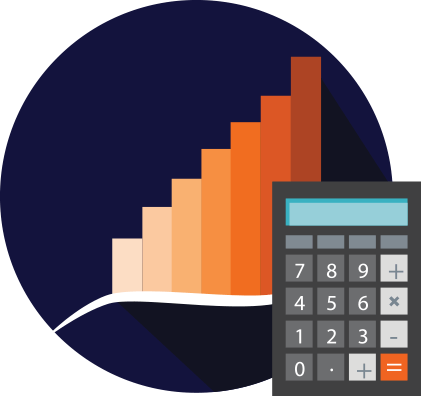Cryptocurrencies remain one of the hottest topics of conversation. Even with price swings and uncertainty, many investors are interested in the idea of buying crypto assets and potentially adding them to their portfolios.
If you’re interested in trying it out, here are a few tips to keep in mind as you choose a cryptocurrency investment.
Only Risk What You Can Afford to Lose
While blockchain technology and cryptocurrencies might be the future of the internet and of money, it’s far from certain.
Crypto assets represent a new asset class, and we don’t know what the end result will be. Before you make a cryptocurrency investment, take a step back and make sure that you’re only risking money you can afford to lose.
Before you move forward with adding cryptocurrencies and other digital assets to your investment portfolio, make sure your other goals are met.
For example, you might make sure that your retirement account contains index products, and that your taxable investment portfolio has value stocks or dividend stocks. Then, keep speculative investments, like cryptocurrencies, to less than 10% of your portfolio.
Once you determine what makes sense for you, then you can start looking at cryptocurrency investment.
Understand the Use Case for the Cryptocurrency Investment
As you choose a cryptocurrency investment for your portfolio, it’s important to look at the use case. Many cryptocurrency tokens are used as part of a blockchain project with a specific purpose. Many other tokens simply exist without a practical underlying use case.
It might be fun to speculate on meme coins, which don’t have much utility but might be popular for a short period of time. The price can jump up, and you have the potential to make a decent amount of money. However, these tokens are likely to drop in price later.
Instead, if you want a long-term cryptocurrency investment with a higher potential for gains in the future, look at the use case. For example, Ethereum (ETH) and Solana (SOL) both offer smart contracts and allow you to mint NFTs. These projects also allow others to build in the ecosystem and can provide a basis for additional applications, including:
- Games
- Financial
- Virtual worlds
- Supply chain management
- Provenance of artwork and wine
Other tokens, like Polkadot (DOT) and ChainLink (LINK) make it possible to increase the interoperability of blockchains or make it possible to connect outside data to the blockchain.
In the end, if you have a use case for a token, it’s more likely to stand the test of time.
Regulation
Don’t forget to consider regulation. Some governments — including the U.S. government — are looking for ways to crack down. Adding regulation might make some coins ineligible for trading in the United States. If you’re based in the U.S., this could be problematic. Check to see which tokens are likely to pass regulatory muster through transparency, insurance and other methods.
Additionally, this relates to the use case as well. If a blockchain project (and its associated token) has a use case, it might be able to remain viable even if a government decides to issue its own digital currency. For example, the U.S. Federal Reserve is researching the idea of a digital dollar issued via blockchain.
Before you choose a cryptocurrency investment, consider the regulatory environment.
Liquidity
Some tokens aren’t easy to trade, mainly because there isn’t a lot of interest in them. They might not have a lot of volume, which means that you could buy the token and then be stuck without finding someone to purchase it later.
One way to avoid this problem is to use a major centralized exchange like Coinbase or Gemini. To be listed on these exchanges, a coin must have a certain amount of trading volume or liquidity.
As a beginner, it might make sense to use an exchange to make a purchase so that you know you can sell it later if you want to take a profit.
Know Your Goals
Anytime you invest, you should understand your goals. Know where your cryptocurrency investment fits into your portfolio. Be clear about the purpose of the crypto token in your portfolio. For more advanced users who use decentralized exchanges, this might mean yield farming for returns on a daily basis. Beginners, on the other hand, might just be interested in dabbling. They might buy a popular coin on an exchange and hold it.
Once you know your goals, you can invest in a way that makes sense for you. Carefully consider your portfolio strategy and goals. Then choose any cryptocurrency investment with those items in mind.
